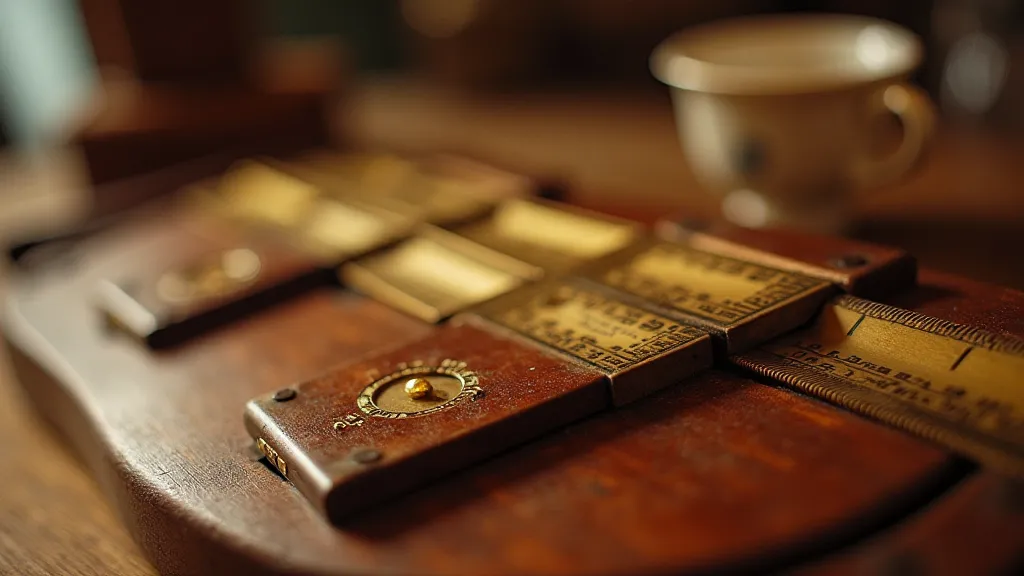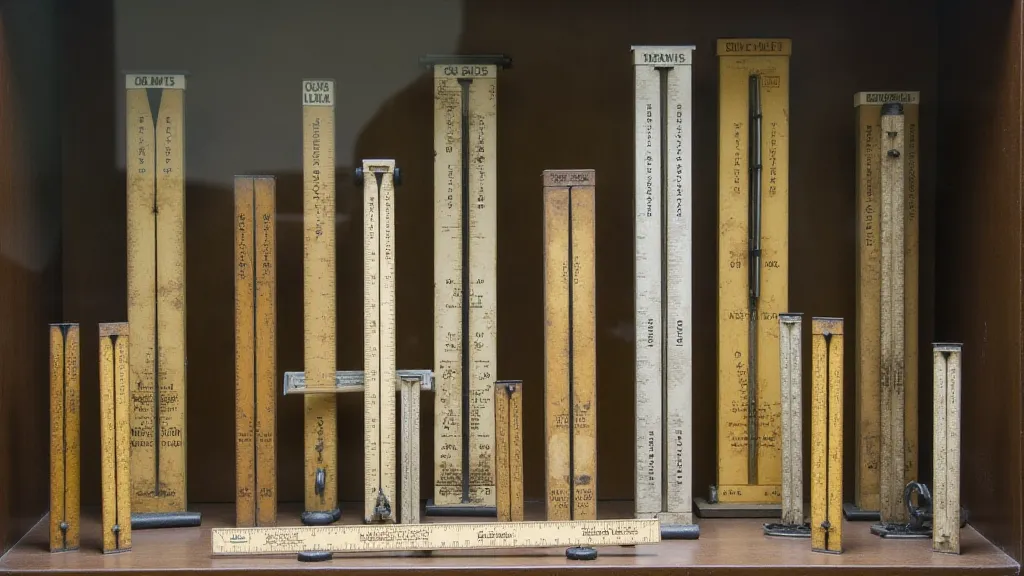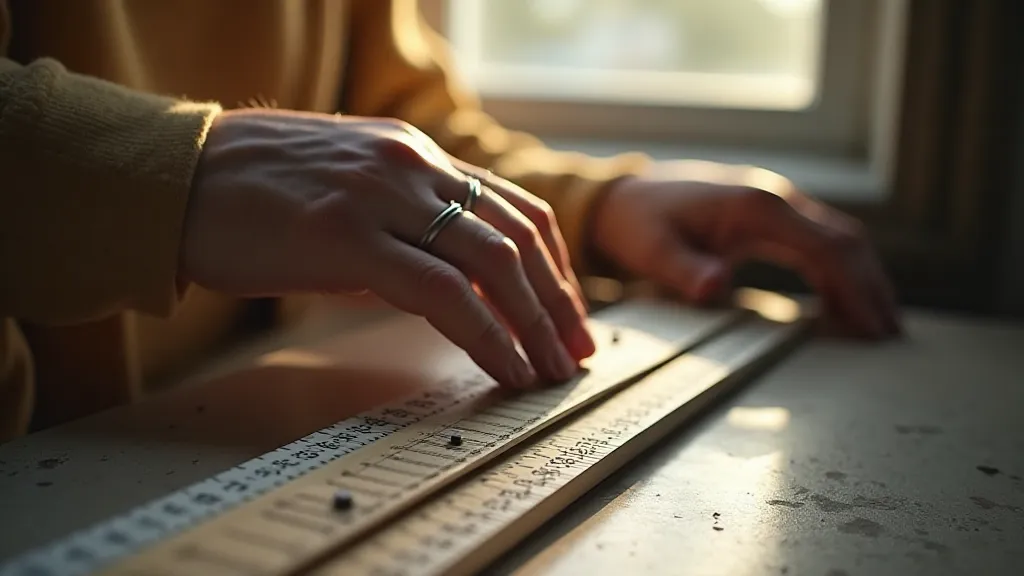The Last Theorem: Reflecting on the Enduring Appeal of Analog Calculation in a Digital World
The whir of a modern computer, the effortless calculations performed in the blink of an eye – these are the hallmarks of our age. Yet, tucked away in drawers, displayed with reverence in workshops, and occasionally still held in the hands of those who understand their quiet power, reside slide rules. These elegant tools, once ubiquitous in engineering, science, and navigation, feel almost anachronistic. But their appeal isn't simply nostalgic; it's rooted in something deeper, a testament to the enduring fascination with tangible processes and the beauty of analog calculation.
I remember my grandfather, a civil engineer, and the slide rule he’d keep close at hand. It wasn't just a tool; it was an extension of his mind, a tangible link to the principles he understood so intimately. I'm no engineer, but I spent hours watching him manipulate the scales, the slight clicking sound a mesmerizing rhythm. I didn't grasp the calculations happening, but I understood that he was doing something profound, something that required focus, understanding, and a certain inherent elegance. The slide rule wasn't just spitting out answers; it was demonstrating the relationships between numbers, the architecture of mathematics made visible.

A Brief History: From Gunter’s Rule to Digital Dominance
The story of the slide rule begins long before transistors and microchips. William Oughtred is generally credited with inventing the slide rule in the 17th century, although earlier versions, notably Gunter's Rule, existed beforehand. The genius of the slide rule lies in its simplicity: two scales marked with numerical progressions, allowing multiplication and division by sliding one relative to the other. Over the centuries, the slide rule evolved, incorporating scales for trigonometry, logarithms, and other functions, becoming increasingly sophisticated. Companies like Pickett, Eberhard, and Polymath dominated the market, their slide rules renowned for their accuracy, durability, and beautiful craftsmanship.
The rise of electronic calculators in the 1970s marked a swift decline for the slide rule. Suddenly, calculations that once required careful manipulation of scales could be performed instantly. Yet, the slide rule didn’t disappear entirely. It found a niche among engineers and scientists who valued its conceptual clarity and tactile feedback. Some, even today, use them as a way to reinforce their understanding of mathematical principles or to appreciate a slower, more deliberate approach to problem-solving.
The Allure of Tangibility
In a world dominated by digital abstraction, the slide rule offers something profoundly different: tangibility. It’s a physical object you can hold, manipulate, and connect with. The feel of the mahogany or bakelite body, the precise movement of the scales, the satisfying *click* as you find your answer - these are sensory experiences that are lost in the digital realm. There’s a certain satisfaction in working through a problem with a slide rule, even if the process is slower. You’re not simply pressing a button; you’re actively engaged in the calculation, understanding each step along the way.
This resonates with a wider human desire to connect with the physicality of our tools. Consider the resurgence of vinyl records, the popularity of fountain pens, or the enduring appeal of woodworking. These activities offer a respite from the ephemeral nature of digital experiences, grounding us in the tangible world. The slide rule fits into this same pattern - a reminder that knowledge and understanding can be embodied in a beautiful, enduring object.
Craftsmanship and Collector's Value
The slide rules manufactured during their heyday weren't mass-produced commodities. They were often meticulously crafted by skilled artisans, using high-quality materials. A Pickett Model N3, for example, is a testament to this craftsmanship – solid mahogany body, precisely engraved scales, and a level of detail that is astonishing. Collectors prize these qualities, recognizing the slide rule not just as a tool, but as a work of art.
The condition of a slide rule significantly impacts its collector's value. While some patina and wear are expected – it *was* a working tool, after all – a slide rule in excellent condition, with its original case and markings, commands a higher price. Restoration can be tricky. It’s generally best to preserve the original finish whenever possible. Excessive cleaning or refinishing can diminish the value and authenticity of the slide rule. Minor repairs to the scales or moving parts are often acceptable, but major restoration should only be undertaken by someone with experience and a deep understanding of slide rule construction.

Beyond Calculation: A Symbol of a Bygone Era
For many, collecting slide rules isn't just about acquiring rare and beautiful objects. It’s about preserving a piece of history, a tangible link to a time when human ingenuity and craftsmanship were paramount. It’s a way to honor the engineers, scientists, and mathematicians who relied on these tools to solve complex problems and shape the world we live in. Each slide rule tells a story – a story of innovation, dedication, and the relentless pursuit of knowledge.
Holding a vintage slide rule, feeling its weight in your hand, you can almost hear the echoes of calculations past. You can imagine the focused minds manipulating these tools, solving problems, and pushing the boundaries of human understanding. It’s a connection to a simpler, perhaps more deliberate, time – a time when the process of discovery was as important as the answer itself.
While the digital age continues to accelerate, the enduring appeal of the slide rule serves as a reminder that some things are valuable precisely because they are slow, tangible, and beautifully crafted. It’s a “last theorem,” if you will – a testament to the enduring power of analog calculation and a celebration of human ingenuity in a digital world. The quiet click of a slide rule isn’t just a sound; it’s a legacy.






